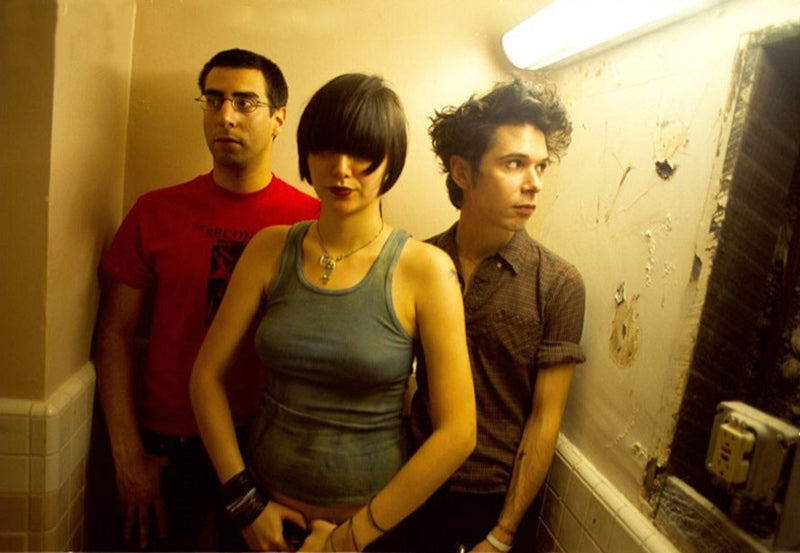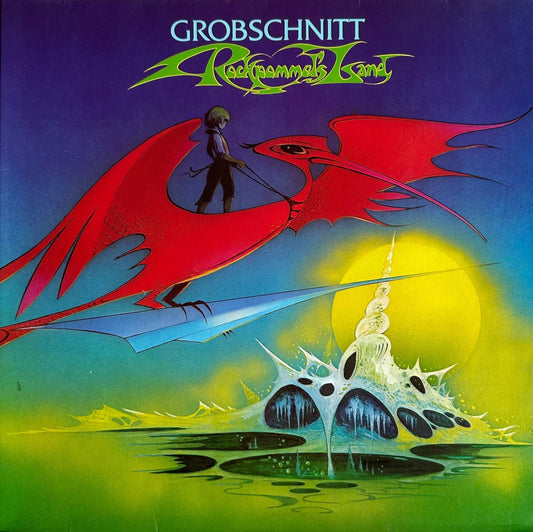Drawing comparisons to Siouxsie and the Banshees, Blondie, and other female-led, punk-influenced bands, the New York-based Yeah Yeah Yeahs have been making artsy garage rock for over twenty years. They started out indie – in the sense of doing everything on their own, in their own way – but by now they’re an integral part of recent pop music history. Pianist and singer Karen O (born Karen Lee Orzolek), guitarist and keyboardist Nick Zinner, and drummer Brian Chase formed the Yeah Yeah Yeahs in 2000. Chase and Karen O had met while music students at Oberlin College and Conservatory, where they listened to avant-punk together. When Karen O transferred to New York University, she became friends with Zinner. Chase joined them in New York, and they soon gained the attention of some big groups: the White Stripes and The Strokes invited them to open their shows. Yeah Yeah Yeahs was their first EP, released in 2001 on their own label, Shifty. It hit the top of the indie charts in the UK, giving the band a solid jumping-off point. Critics liked it, too. The five-track collection literally opens with a bang: a song called “Bang,” that is. As the lead singer, Karen O has described herself as a female Iggy Pop, and you can hear that wildness in this track:
For its first full-length album, the band signed with Interscope Records, where they remained for the next decade. Despite that contract, in 2003 they self-financed their debut, Fever to Tell, so they could maintain as much control as possible over its creation and marketing. It was produced by David Andrew Sitek, producer and member of the band TV on the Radio. He became a long-time collaborator with the Yeah Yeah Yeahs. The single “Maps” became a big hit thanks to its video. Many of the band’s inventive music videos have earned them attention and awards. At the time, a critic in The Guardian called Fever to Tell “ecstatic dance punk,” which is an efficient description of the various stylistic forces at work. This isn’t just garage-punk revival; it’s also flavored with the pulse and gloss of club music. On the other hand, some of their songs have more of a true punk-rock rumble, like “Black Tongue.”
The next record, Show Your Bones (2006), earned a Grammy nomination for Best Alternative Music Album. Reviews started using terms like “minimalist” to describe the group’s DIY sound. The three band members did all their own multitracking, covering all instruments, arrangements, and programming themselves without bringing in session musicians. They do, however, use a secondary guitarist when they tour. This album shows a new emotional vulnerability. The song “Dudley” is effective as a breakup song, not in the traditional torch-song way, but because its melody is based on tropes from children’s songs. That simplicity in the music paired with the directness of the lyrics gives the song’s message an elemental power.
By contrast, there’s “Warrior,” as philosophical as it psychedelic, with long lines and a melody that wanders into the musical wilderness, changing meter every couple of lines. Zinner’s choice to pick out the melody on guitar in unison with Karen O’s voice in some sections provides an interesting pensiveness. And then, inevitably, it all opens up into a big, bang-the-drums-in-the-garage sound.
As they toured in support of Show Your Bones, tensions within the band grew severe, and they considered hanging it up. Instead, they channeled their rage into an EP called Is Is, which was released with an accompanying short film in 2007. Wanting a raw, sexual resonance, they tapped producer Nick Launay. Although he is best known for his work with Arcade Fire and Nick Cave and the Bad Seeds, the band wanted Launay because he had produced a favorite of theirs, British punk band Public Image Ltd.’s no-holds-barred Flowers of Romance, from 1981. “Down Boy” on the Is Is EP got some national attention thanks to TV appearances, but the gem of the collection is “Isis,” with its organ-like sustained minor chord and Karen O sounding particularly like Siouxsie Sioux.
Launay returned for the next full album, It’s Blitz (2009), coproducing with Sitek and thus combining their distinct approaches to the Yeah Yeah Yeahs’ sound. Featured on more than 20 “Best of 2009” album lists, It’s Blitz was also nominated for a 2010 Grammy Award for best alternative music. In truth, the label “alternative” is not entirely applicable to this album. It is fundamentally built on borrowed styles, particularly disco. “Dragon Queen,” with its slo-mo clubbing vibe, repetitive internal lines, and melody doubled at the lower octave, is reminiscent of late-1980s The Cure. There’s a touch of funk in the bassline, which seems to trap the harmony in a small cage.
The bonus tracks on the deluxe edition CD included an acoustic reimagining of the single “Skeletons.” Where the electronic version is atmospheric, the acoustic rendition, O’s voice over a simple and imperfect guitar fingerpicking pattern, brings more focus onto the melancholic melody.
Their last album (so far) was Mosquito, which charted well in 2013. On it, the band embraced the burgeoning lo-fi movement; the iffy, retro equipment and vaguely distorted sounds fit well into the band’s garage-punk aesthetic anyway, so it was a logical move. In a way, it was a return to their roots after the shinier sounds of It’s Blitz. The crackling dissonances of “Under the Earth” are a good example of the way lo-fi, when done in an intelligent, sophisticated way, can indeed have satisfying sonic depth. This song gives you the sense of being in an alien forest: you’re surrounded by countless unidentifiable sounds that add up to an all-encompassing climate.
The Yeah Yeah Yeahs took a hiatus for a few years after Mosquito, eventually reassembling for some gigs in 2018 and 2019. Although they have not completed a studio album in over a decade, that doesn’t mean it will never happen.
Header image courtesy of Wikimedia Commons/Max Knies.



